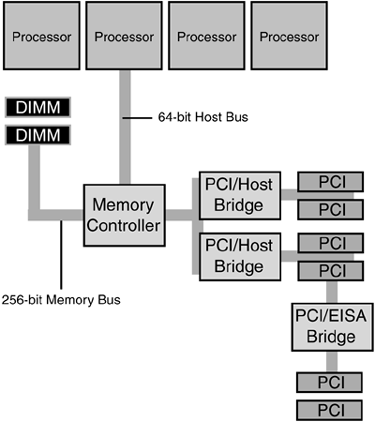2.5. Parallel IO Buses
| < Day Day Up > |
2.5. Parallel I/O BusesThe bottleneck now shifted to I/O access and I/O bus speed. Multiple I/O devices in a server were located on one bus and were limited to one bus speed. This limitation was solved by adding dual-peer and triple-peer I/O buses. This design was possible by adding more I/O controllers called bridges, as shown in Figure 2-5. Figure 2-5. Parallel I/O bus architecture.
With this design, peripherals on any bus have independent access to the processors and memory. This design also allows I/O buses to operate at different speeds, separating the slow I/O from faster I/O. Buffers in the bridges allow I/O transfers to queue, reducing latency. The key benefits of this design included the following:
|
| < Day Day Up > |
EAN: 2147483647
Pages: 278
- Chapter I e-Search: A Conceptual Framework of Online Consumer Behavior
- Chapter II Information Search on the Internet: A Causal Model
- Chapter XII Web Design and E-Commerce
- Chapter XIV Product Catalog and Shopping Cart Effective Design
- Chapter XVI Turning Web Surfers into Loyal Customers: Cognitive Lock-In Through Interface Design and Web Site Usability
